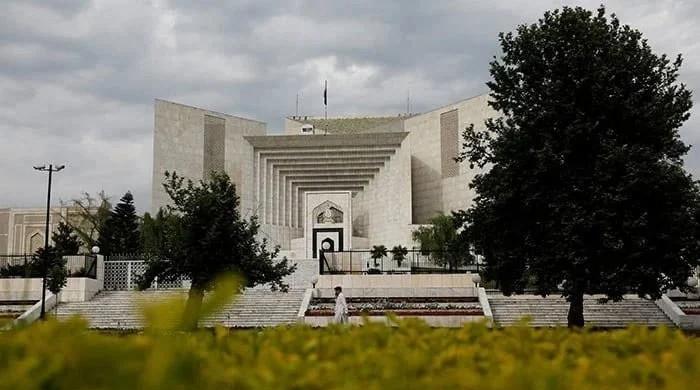Immediately restore NCOC, PM Shehbaz orders as Pakistan reports first Omicron sub-variant case
PM Shehbaz Sharif takes notice of rising COVID-19 cases of Omicron sub-variant
May 10, 2022

- PM Shehbaz Sharif takes notice of rising COVID-19 cases of Omicron sub-variant.
- Asks Ministry of Health for report on current situation of sub-variant's spread across country.
- Pakistan had detected its first case of the Omicron sub-variant, BA.2.12.1.
ISLAMABAD: Taking notice of the rising COVID-19 cases of the Omicron sub-variant, Prime Minister Shehbaz Sharif has ordered the immediate restoration of the National Command and Operation Centre (NCOC) that was disbanded in March after the country had seen an improvement in the virus situation.
The PM has asked the Ministry of Health for a report on the current situation of the sub-variant’s spread across the country.
A day earlier, Pakistan had detected its first case of the Omicron sub-variant, the NIH had reported, as the public got back to routine life after Eidul Fitr celebrations without COVID-19 restrictions for the first time in two years.
A statement issued by the National Institute of Health, Islamabad, (NIH) on Twitter had said it detected a case of Omicron sub-variant BA.2.12.1 through genome sequencing. It said that the new sub-variant is causing an increasing number of COVID-19 cases in different countries.
On March 31, Pakistan announced the closure of the NCOC, the body which was set up in March 2020 in the wake of the COVID-19 pandemic to collect, analyse and process information, transferring all its functions, roles and responsibilities to the NIH.
How deadly is the variant?
This Omicron subtype is highly infectious, more so than its predecessor. As per some reports, it is about 30% more transmissible than the prior Omicron iterations.
The sub-lineage, BA.2.12.1, is already accounting for a growing share of coronavirus infections in the United States. As per the US Centers for Disease Control and Prevention, BA.2.12.1 was found in 36% of the samples sequenced in the last week of April, up from 0.2% in late February.
While it is known to spread faster, it is still unclear if this variant is more or less deadly than the original Omicron or Delta.
When was it first detected?
This Omicron sub-variant of the coronavirus was first identified six months back. While in the United States it was detected in April in New York.
What are the symptoms of BA.2.12.1?
Doctors are still studying the variant to determine its exact symptoms, but some cases of the sub-variant suggest that it also has flu-like symptoms, similar to the Omicron variant.
Therefore, those infected could experience sneezing, coughing, sore throat, fatigue and dizziness.
You can read Geo.tv's full explainer on Omicron's sub-variant here.











